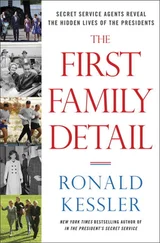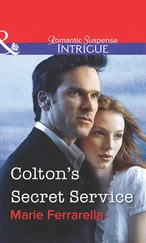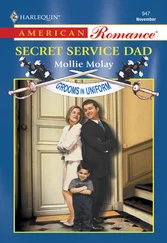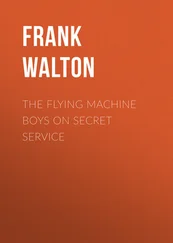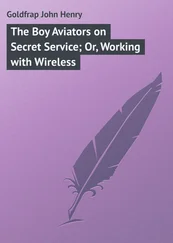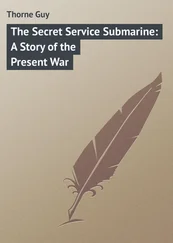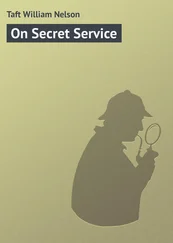“I Forgot to Duck”
COMING BACK FROM the ranch one day, President Reagan chatted with his agents about how tough it was being president, always surrounded by security.
“I would love to be able to walk into a store like any person, just go down a magazine rack and browse through the magazines like I used to. Walk here, walk there,” Reagan said.
His agents suggested he go into a store spontaneously to lessen the risk. While he was in the store, they would block the entrance.
“Valentine’s Day was coming up, and he said he wanted to go to a card store in Washington and get a card for Nancy,” says former agent Dennis Chomicki. “So we pull up in a small motorcade, the president gets out of the car and goes into the store. He was just browsing around, having a great time.”
Meanwhile, a man was looking at cards.
“Reagan picks a card up, and he looks over to this guy and shows it to him and he says, ‘Hey do you think Nancy would like this?’” Chomicki says.
At first, the customer said, “Oh, yeah, your wife would like that.”
Then he looked up.
“Oh, my God, the president!” he said.
Not long after that, Reagan would be reminded of why presidents need protection. At two thirty-five P.M. on March 30, 1981, John W. Hinckley Jr., twenty-five, fired a .22 Röhm RG-14 revolver at Reagan as he left the Washington Hilton Hotel after giving a speech.
Members of the public had been allowed to greet Reagan as he left the hotel. Magnetometers were then used at stationary locations such as the White House but not when the president traveled outside the White House. As a result, no one had been screened. By inserting himself into that crowd, which included the press, Hinckley managed to get within twenty feet of the president.
Instinctively, Agent Timothy McCarthy hurled himself in front of Reagan and took a bullet in the right chest. It passed through his right lung and lacerated his liver. While Secret Service agents and Uniformed Division officers have been wounded or killed during protection duty, McCarthy is the only agent to have actually taken a bullet for the president by stepping into the line of fire. In a second and a half, Hinckley fired six rounds. Besides McCarthy, Metropolitan Police Officer Thomas Delahanty and Press Secretary Jim Brady were wounded. Brady suffered extensive brain damage.
Agent Dennis McCarthy—no relation to Timothy—would be the first to pounce on Hinckley. At first, McCarthy thought he was hearing firecrackers go off.
“After the second shot, I knew it was a gun,” McCarthy says. “At that point, I had a feeling of panic. I knew I had to stop it.”
By the third shot, McCarthy spotted a pair of hands gripping a pistol in between the television cameras just eight feet away. McCarthy lunged for the gun and hurled himself on Hinckley as he was still firing.
“As I was going through the air, I remember the desperate feeling: ‘I’ve got to get to him! I’ve got to get to him! I’ve got to stop him!’” McCarthy says.
Crouched in a combat position, Hinckley collapsed as McCarthy landed on his back. While the assailant offered no resistance, McCarthy remembers hearing the fast click, click, click as Hinckley continued squeezing the trigger, even after the .22 caliber revolver’s six shots had been expended. McCarthy had always wondered how he would react when gunfire actually started. Now he knew.
Like McCarthy, President Reagan at first thought he was hearing the sound of firecrackers.
“I was almost to the car when I heard what sounded like two or three firecrackers over to my left—just a small fluttering sound, pop, pop, pop,” Reagan said later. “I turned and said, ‘What the hell’s that?’ Just then, Jerry Parr, the head of our Secret Service unit, grabbed me by the waist and literally hurled me into the back of the limousine. I landed on my face atop the armrest across the backseat, and Jerry jumped on top of me.”
“I remember three quick shots and four more,” Parr tells me. “With Agent Ray Shaddick, I pushed the president down behind another agent who was holding the car door open. Agent McCarthy got hold of Hinckley by leaping through the air. I got the president in the car, and the other agent slammed the door, and we drove off.”
The limo began speeding toward the White House.
“I checked him over and found no blood,” Parr says. “After fifteen or twenty seconds, we were under Dupont Circle moving fast. President Reagan had a napkin from the speech and dabbed his mouth with it. He said, ‘I think I cut the inside of my mouth.’”
Parr noticed that the blood was bright red and frothy. Knowing that to be a danger sign, he ordered the driver to head toward George Washington University Hospital. It was the hospital that had been preselected in the event medical assistance was needed.
It turned out that the president may have been within minutes of death when he arrived at the hospital. Going straight there probably saved his life.
Reagan remembered how, as they neared the hospital, he suddenly found he could barely breathe. “No matter how hard I tried, I couldn’t get enough air,” he said. “I was frightened and started to panic a little. I just was not able to inhale enough air.”
In fact, Parr says, “I didn’t know he was shot until we got to the hospital. He collapsed as we walked in.”
As he was placed on a gurney Reagan felt excruciating pain near his ribs.
“What worried me most was that I still could not get enough air, even after the doctors placed a breathing tube in my throat,” Reagan said. “Every time I tried to inhale, I seemed to get less air. I remember looking up from the gurney, trying to focus my eyes on the square ceiling tiles, and praying. Then I guess I passed out for a few minutes.”
When Reagan regained consciousness, he became aware of someone holding his hand.
“It was a soft, feminine hand,” he said. “I felt it come up and touch mine and then hold on tight to it. It gave me a wonderful feeling. Even now I find it difficult to explain how reassuring, how wonderful, it felt. It must have been the hand of a nurse kneeling very close to the gurney, but I couldn’t see her. I started asking, ‘Who’s holding my hand? Who’s holding my hand?’”
At one point, Reagan opened his eyes to see his wife, Nancy.
“Honey, I forgot to duck,” he joked.
As luck would have it, that afternoon most of the doctors who practiced at the hospital were attending a meeting only an elevator ride away from the emergency room.
“Within a few minutes after I arrived, the room was full of specialists in virtually every medical field,” Reagan said. “When one of the doctors said they were going to operate on me, I said, ‘I hope you’re a Republican.’ He looked at me and said, ‘Today Mr. President, we’re all Republicans.’ I also remember saying, after one of the nurses asked me how I felt, ‘All in all, I’d rather be in Philadelphia.’” It was the epitaph of fellow actor W. C. Fields.
Surgeons found a bullet that had punctured and collapsed a lung. It was lodged an inch from Reagan’s heart. If he had been wearing a bulletproof vest, the bullet likely would not have penetrated Reagan’s body.
“On several previous occasions when I’d been out in public as president, the Secret Service had made me wear a bulletproof vest under my suit,” Reagan explained later. “That day, even though I was going to speak to some die-hard Democrats who didn’t think much of my economic recovery program, no one had thought my iron underwear would be necessary because my only exposure was to be a thirty-foot walk to the car.”
“Some of my colleagues have said, ‘Well, I would have taken him to the White House because it’s the safest place,’” Parr says. “You take a chance when you take the president to the hospital. If he’s not hurt, then you frighten the nation. But in this case, we were right. And there was a trauma team there that gets a lot of gunshot wounds.”
Читать дальше

